Sandstone
Sandstones are composed of relatively coarse sand-sized particles that are visible and impart a grainy texture. Sandstones are usually a poor source of molds and casts (except trackways), but can contain permineralized bone or wood. Reddish colors are common.
|
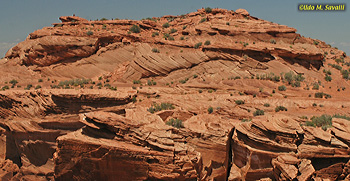
|
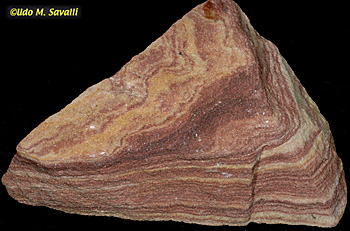
|
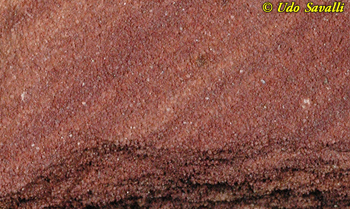
|
|
Layered sandstone at Glen Canyon NRA, AZ.
|
Sandstone. The colored layers result from accumulations of different types of sand (not all sandstone is layered).
|
Sandstone. Closeup showing grainy texture
|
Mudstones and Shales
Both mudstones (including both siltstones and claystones) and shales are composed of finer particles that cannot be distinguished by the naked eye, so they lack the grainy texture of sandstones. They differ in how the particles are cemented together. Mudstones are the least rock-like and often can easily crumble into irregular-shaped blocks, while shales tend to be harder and split into flat horizontal plates. Both are good sources of fossils.
|
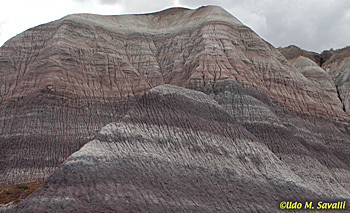
|

|
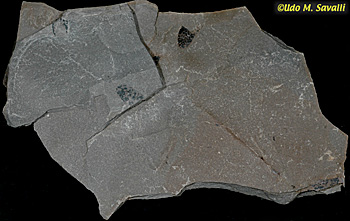
|
|
Mudstone cliffs at Petrified Forest National Monument, AZ. Note the eroded surface.
|
Mudstone (specifically siltstone) rock.
|
Shale splits into horizontal layers
|
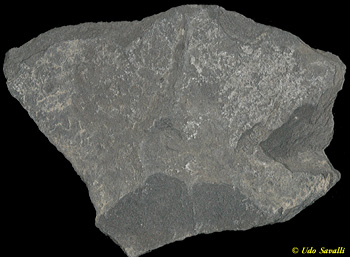
|

|

|
|
Mudstone
|
This Shale is called paper shale because it splits into very thin layers (see top and left edges). This has a fossil cone.
|
Shale
|
Tuff
Tuff has a distinctive orgin: it is composed of volcanic ash (thus of igneous origin) that has accumulated as a sediment and then compressed and cemented together like a true sedimentary rock. Its structure varies, but is often fine-grained and can be a source of quality fossils.
|
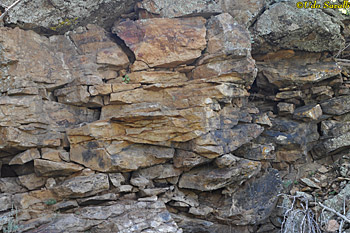
|
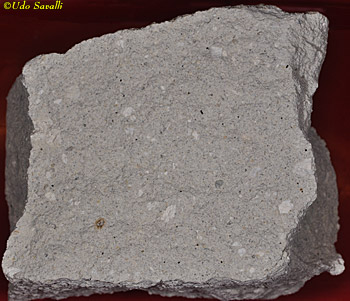
|
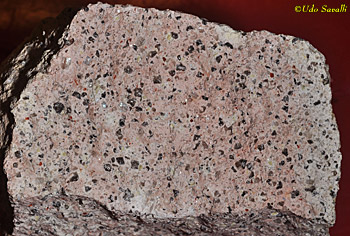
|
|
This tuff outcrop in Florissant, CO looks much like mudstone. Microscopic and chemical analysis is often necessary to distinguish them.
|
Rhyolitic tuff.
|
Sometimes tuff can contain larger pieces of glass-like volcanic ejecta and thus resembles breccia.
|
Limestone
Limestone is characterized by a high concentration of calcite (calcium carbonate) that strongly cements the sediment particles together. Superficially it can resemble mudstones and shales, but it typically is harder and will fizz when exposed to acid. The amount of calcite can vary, so there is no definitive line between limestone and mudstone or shale. The calcium carbonate is often (but not always) derived from the shells of tiny marine organisms and algae, and thus is a good indicator of fossil-bearing aquatic sediments.
|
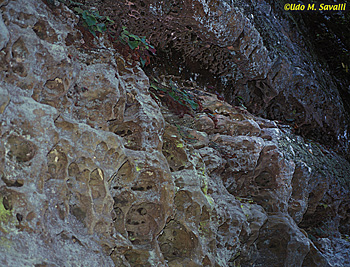
|
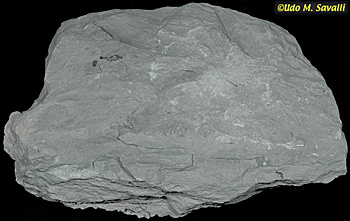
|
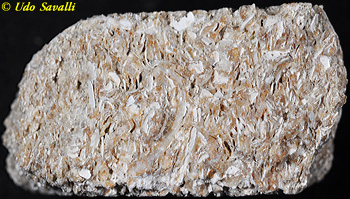
|
|
Limestone cliffs. The rounded edges and pitted surface are typical of limestone because, while hard and resistant to physical erosion, it can dissolve especially if the water is acidic. Natural Bridges S.P., KY.
|
Limestone. The texture of limestone can resemble shale or mudstone, but it is usually harder and less likely to split or crumble. Fizzes when exposed to acid.
|
Coquina Limestone. Limestone that is composed primarily of visible shelly material is called coquina.
|
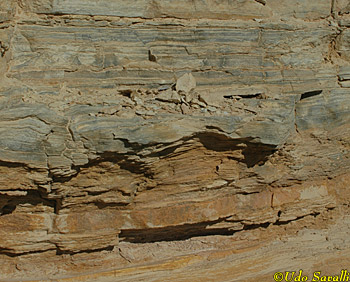
|
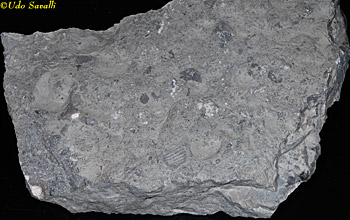
|
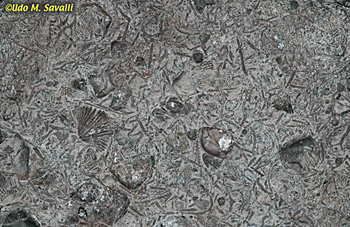
|
|
Layered Limestone from an ancient lake bed. The grayer layers indicate the accumulation of organic material. Fossil Butte National Monument, WY.
|
Limestone
|
Shelly/Coquina Limestone. Naco Formation, Arizona
|
Conglomerate & Breccia
In both conglomerate and breccia, large particles (gravel, stones, etc.) are cemented into a finer matrix. The particles in conglomerate rocks are rounded, indicating they have eroded, such as in a river. Particles in breccia have sharp angles, indicating they were broken off the parent rock (such as by landslides) without any opportunity for erosion. Neither are likely to contain fossils.
|

|
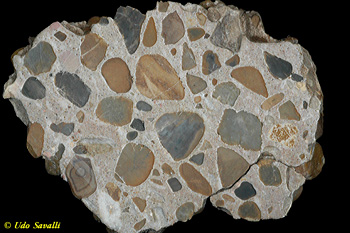
|
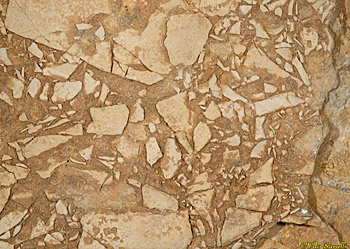
|
|
Conglomerate alternating with sandstone.
|
Conglomerate rock, cut and polished.
|
Breccia. Differs from conglomerate in that the embedded rocks are angular rather than rounded
|
Other Chemical Sedimentary Rocks
As with limestones, these rocks are produced by chemical processes rather than simply cementing a substrate together.
|
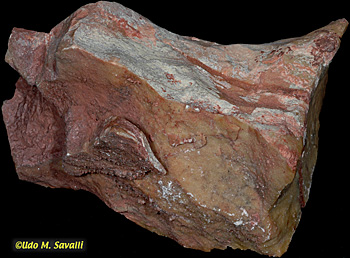
|
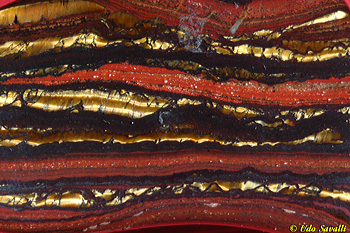
|

|
|
Chert. Chert is often associated with limestone but results from the precipitation of silica rather than calcite. Forms curved surfaces when split. Red, green, and brown coloration is common. It can contain small fossils.
|
The red layers in this ancient "banded iron formation" are chert produced during anoxic periods that alternate with layers produceded by ancient bacteria 2.5 bya.
|
Coal is a carbon-rich sedimentary rock (or metamorphic rock in the case of anthracite coal) derived from dense accumulations of plant material such as from peat swamps. It is considered a chemical fossil.
|